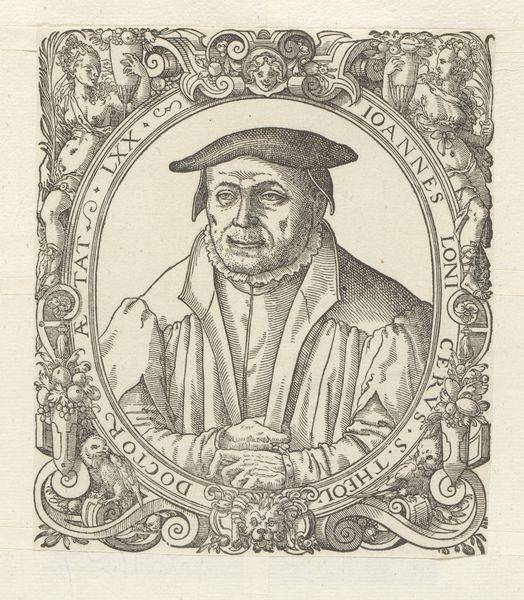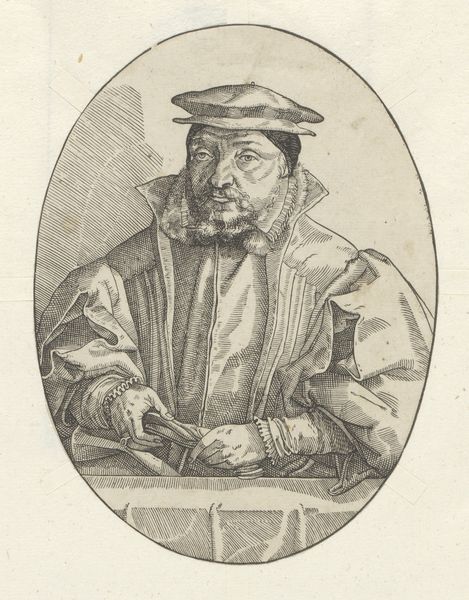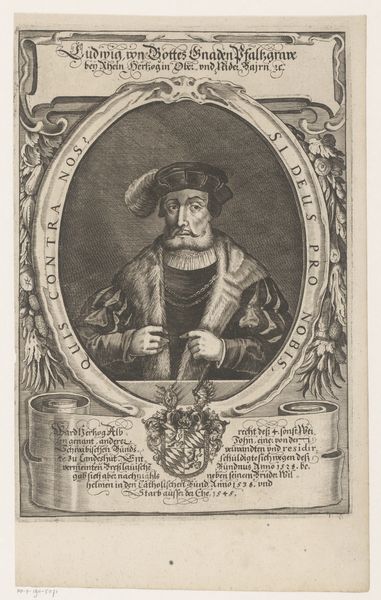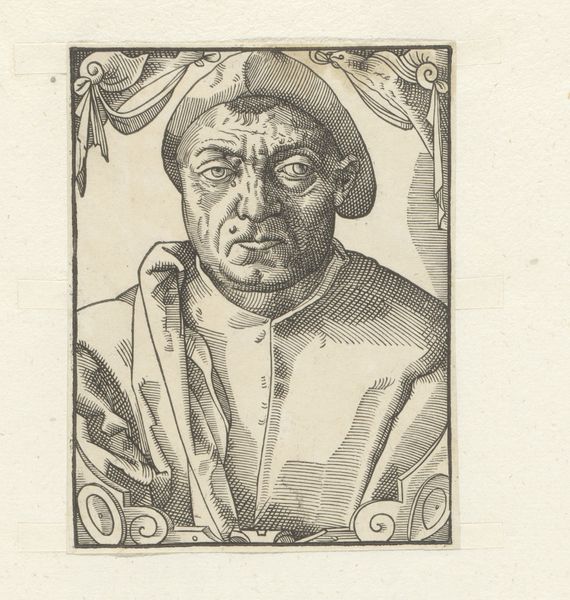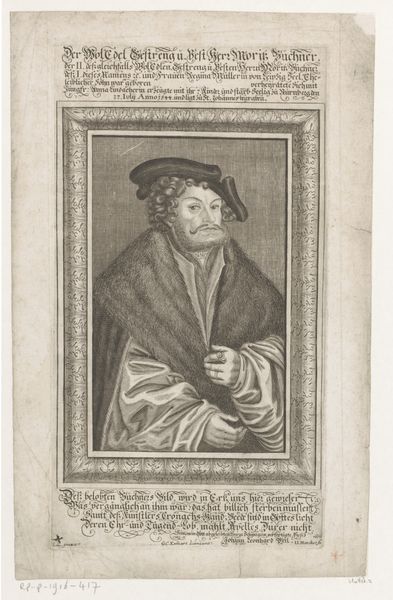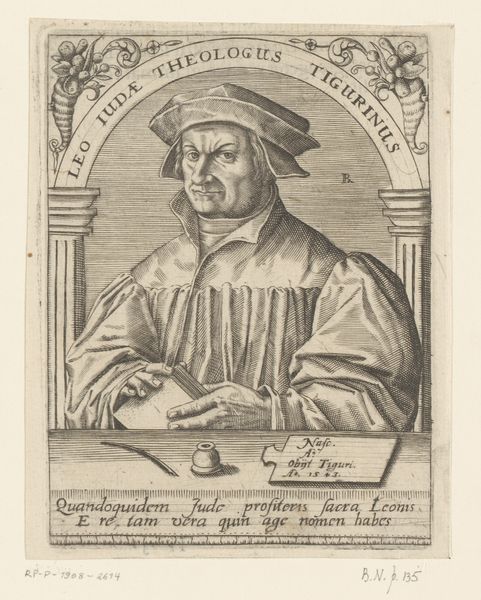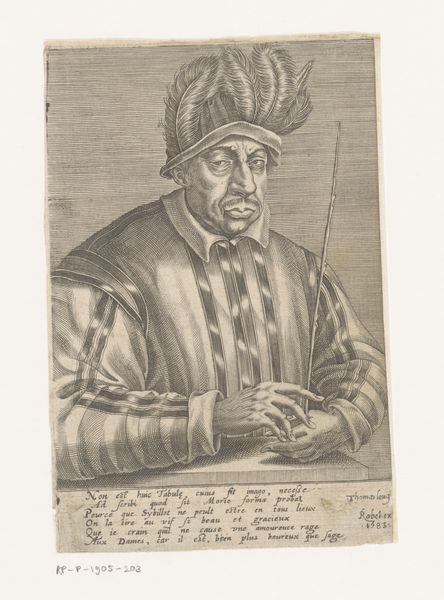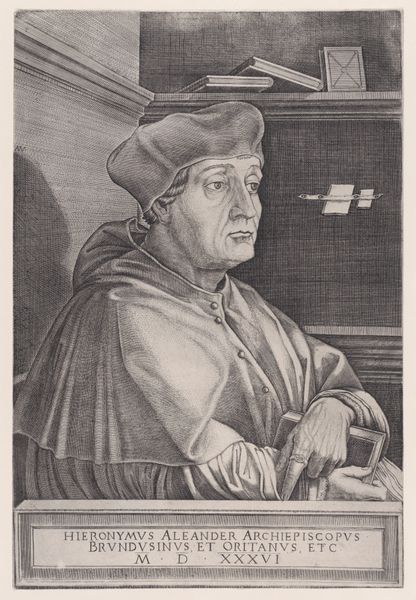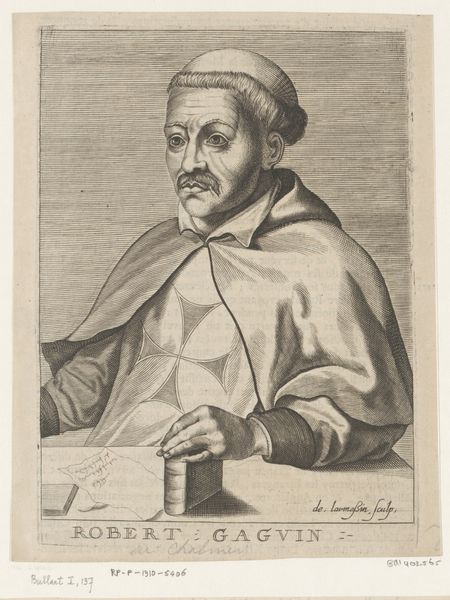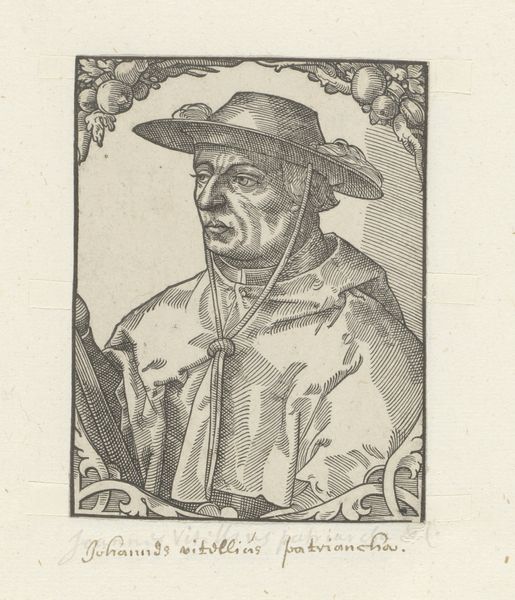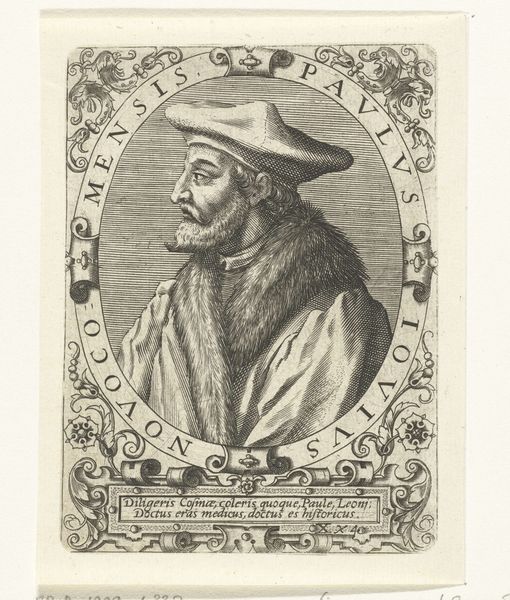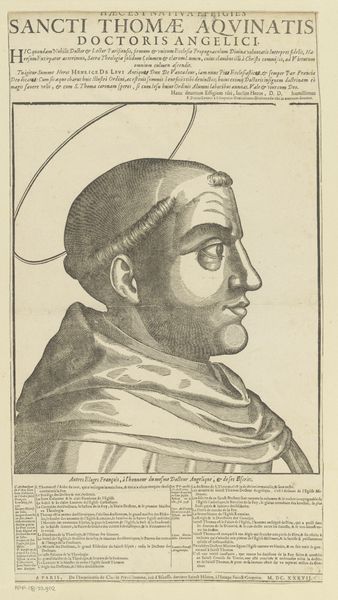
graphic-art, engraving
#
portrait
#
graphic-art
#
baroque
#
old engraving style
#
caricature
#
engraving
Dimensions: height 188 mm, width 137 mm
Copyright: Rijks Museum: Open Domain
Curator: This is Nicolas de Larmessin's "Portret van Andrea del Sarto," an engraving from 1682, housed right here in the Rijksmuseum. Editor: It's stark, immediate. The way the light catches the fabric really defines the visual field—it speaks of texture and sheen, almost overwhelming the subject's face. Curator: Precisely! Let’s examine that compositional choice. The subject occupies most of the picture plane. This allows Larmessin to capture details—the folds of the beret, the sitter's rather…distinctive facial features, which lean into caricature. The use of engraving gives everything a certain crispness, wouldn't you say? Editor: Definitely. You can see the mark making process here – how the tools, techniques, and choices impacted this production. I am interested in the physical act of making those lines. The artist is constrained and freed by their implements. Curator: Agreed, though I find the subject's gaze to be rather crucial to this work’s function as portraiture. His eyes are directly fixed on the viewer, engaging us across centuries. There is something undeniably human laid bare here. What do you make of the artist’s choice to set the figure against a horizontally-lined landscape or skyscape? Editor: I wonder if this scene references something beyond purely aesthetic concerns? How much labor was involved in the creation of these graphic images? To what extent would this inform our perspective about both the artmaking practice, as well as its reception? Curator: It's fascinating to consider artmaking labor informing artistic interpretation; however, from a stylistic standpoint, "Portret van Andrea del Sarto" typifies the baroque emphasis on dynamism and emotional engagement, especially when viewed in a series with other images in the show. Editor: True enough. Seeing all the labor on view adds depth to the analysis and allows one to more concretely assess this unique image, but I understand and see how it succeeds on its own terms as well. Curator: Indeed. By attending closely to its graphic art qualities, we have begun to explore its art-historical context. Editor: It's so compelling to witness how the tools of its construction yield such evocative images of their time.
Comments
No comments
Be the first to comment and join the conversation on the ultimate creative platform.
